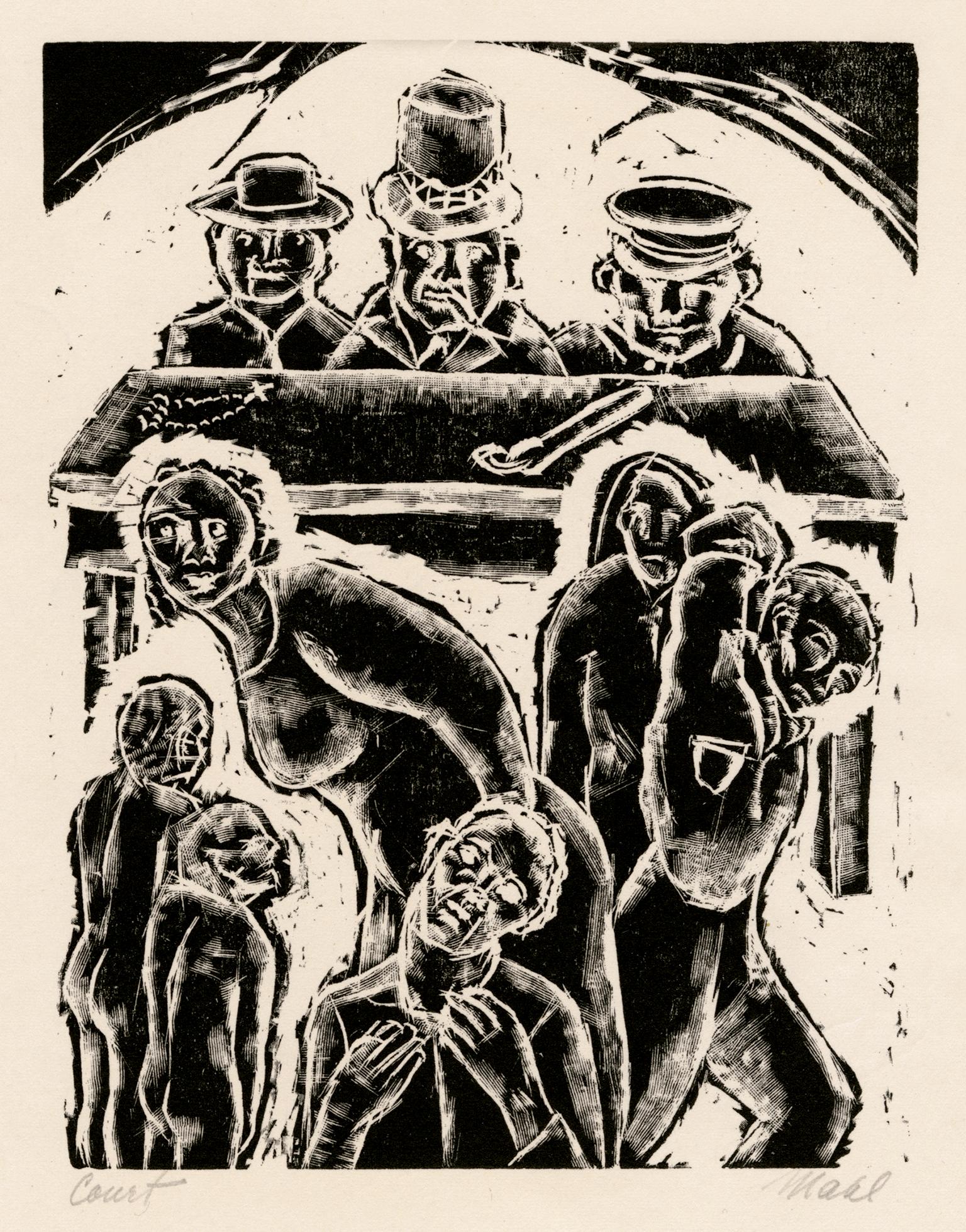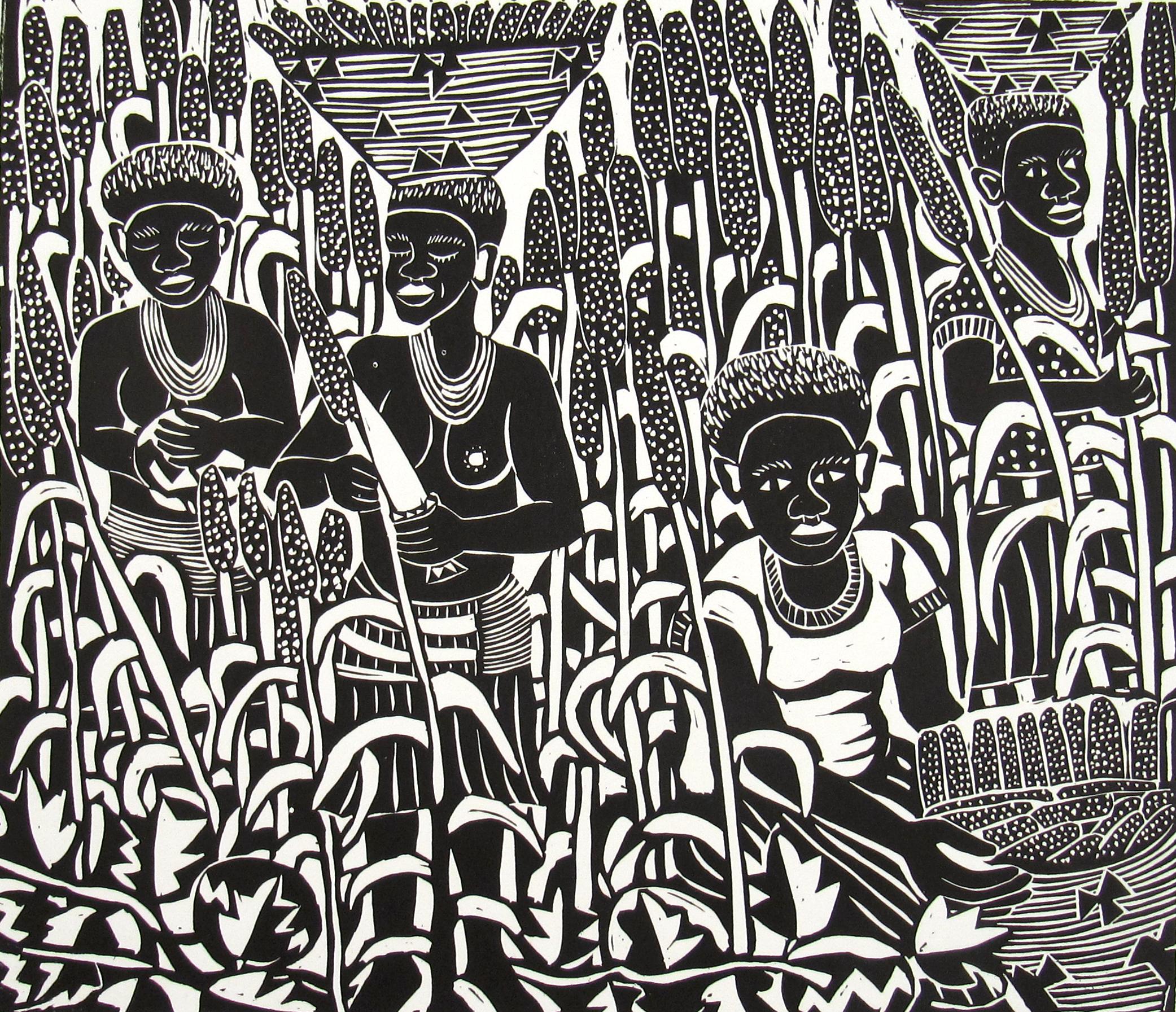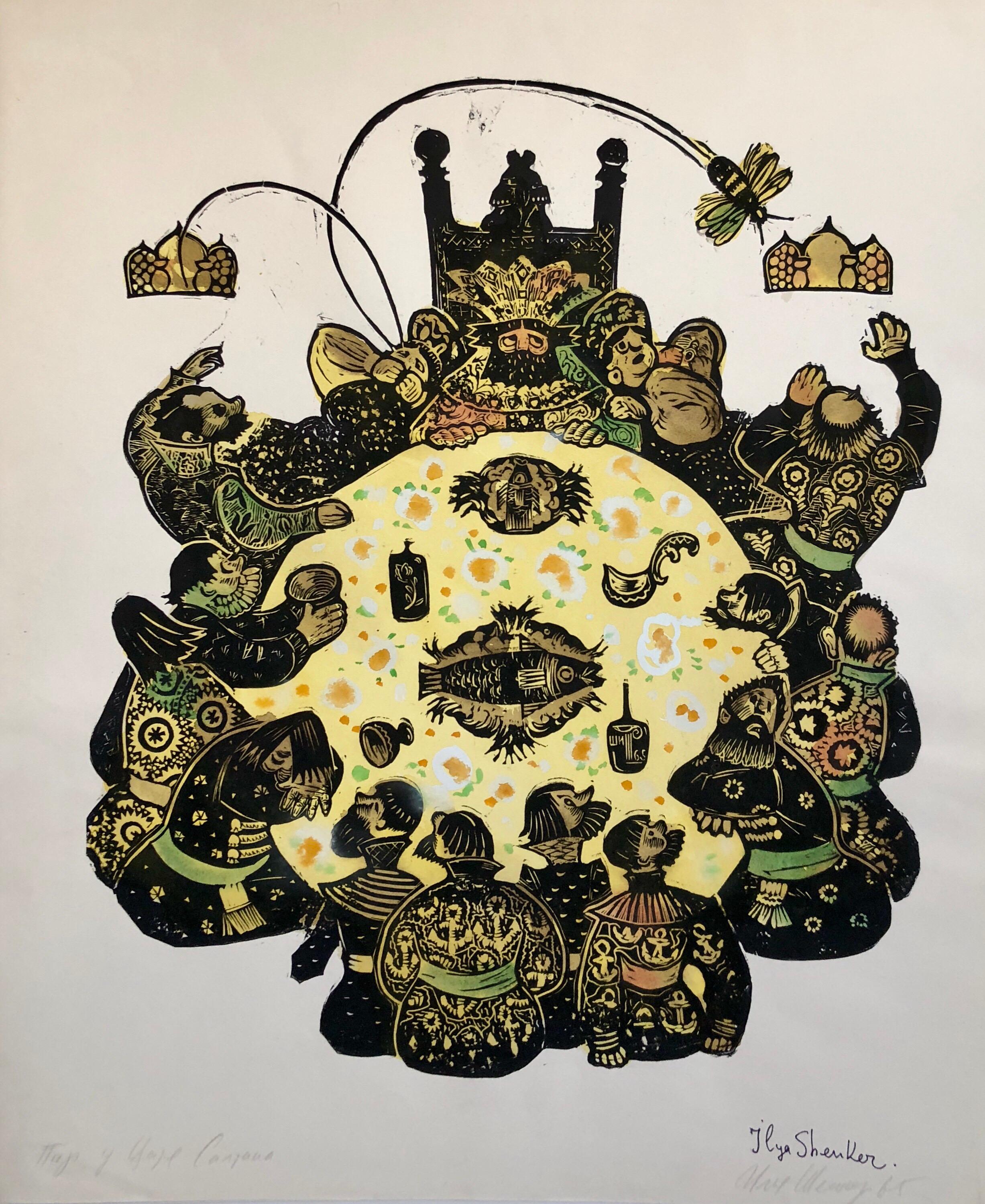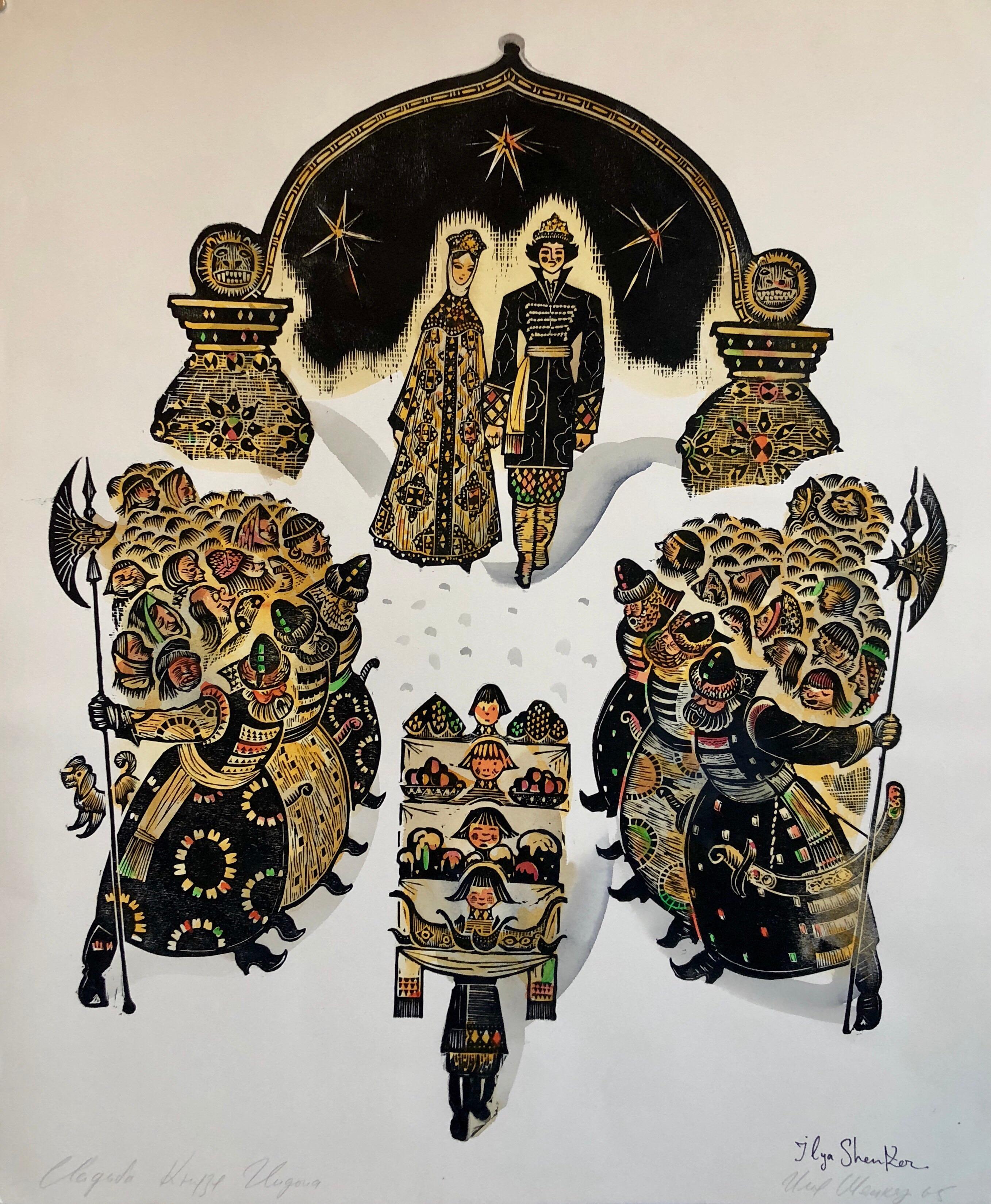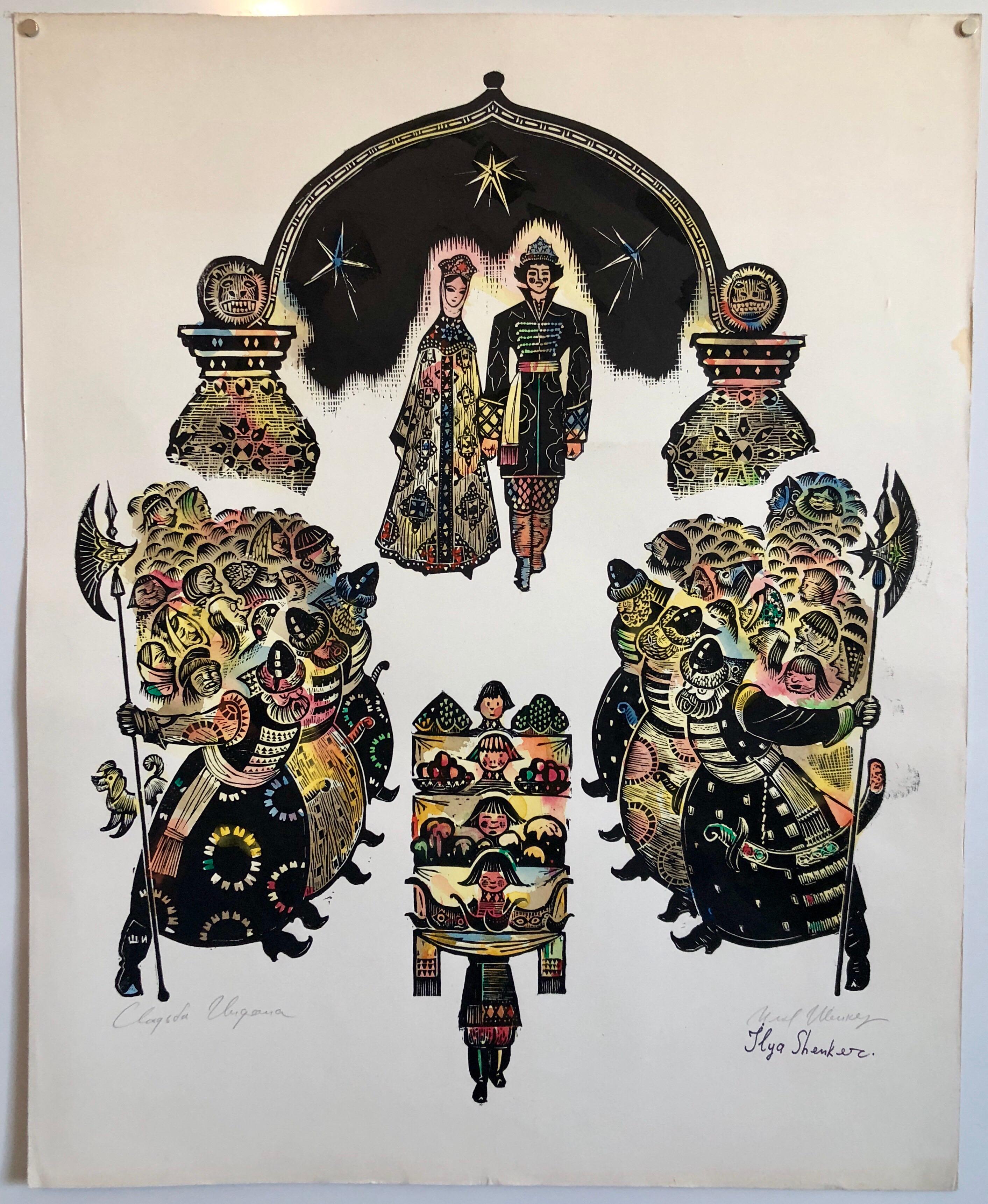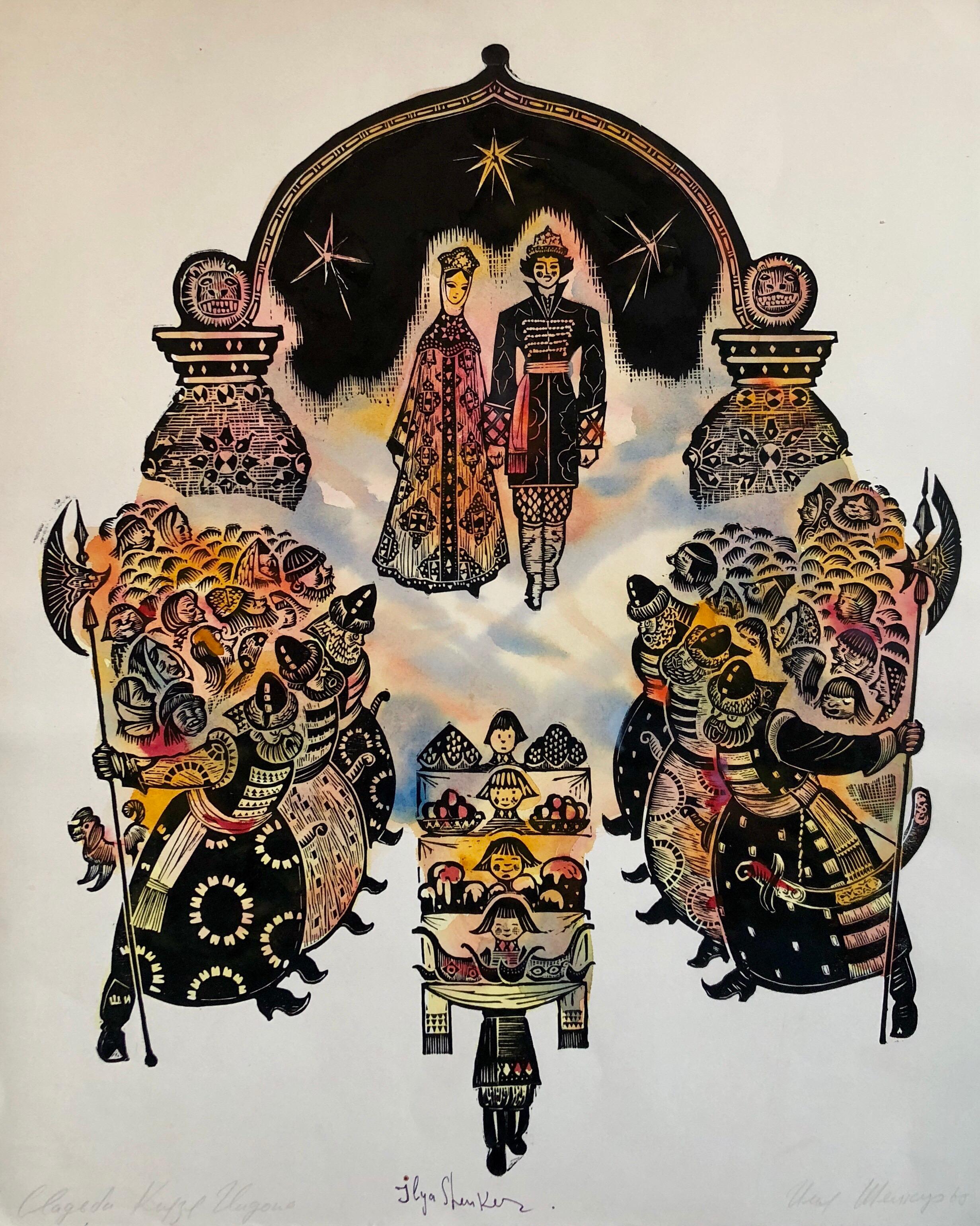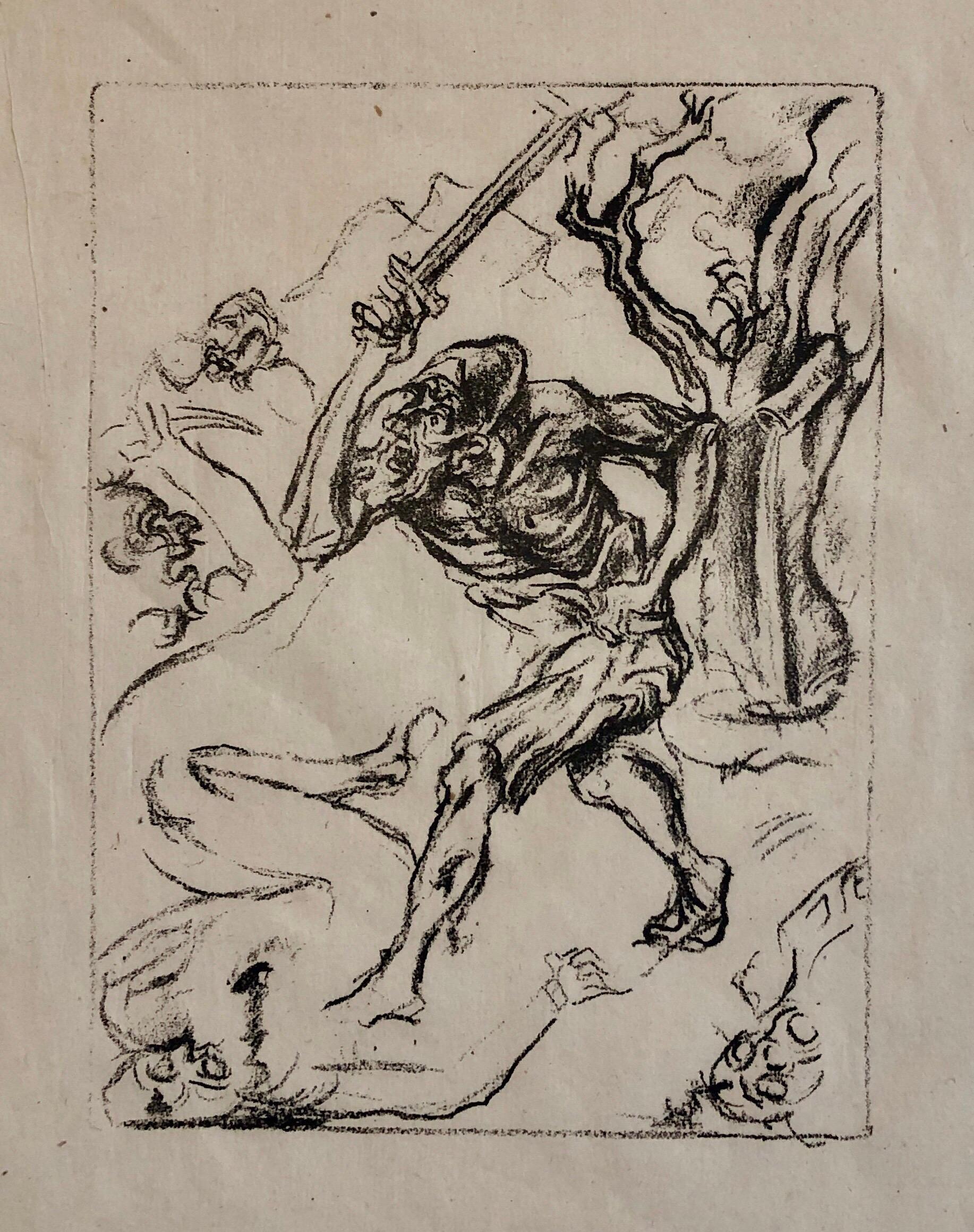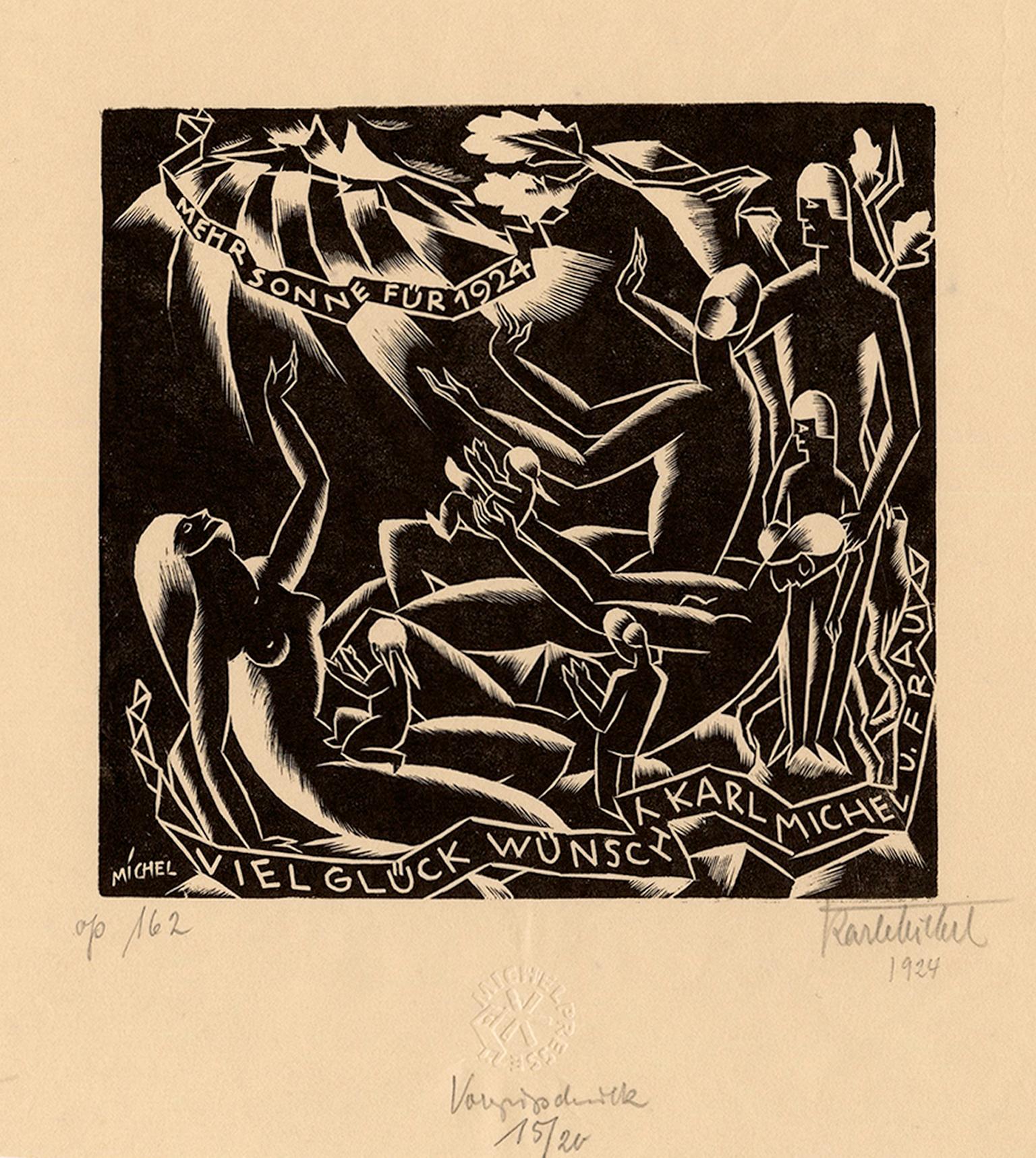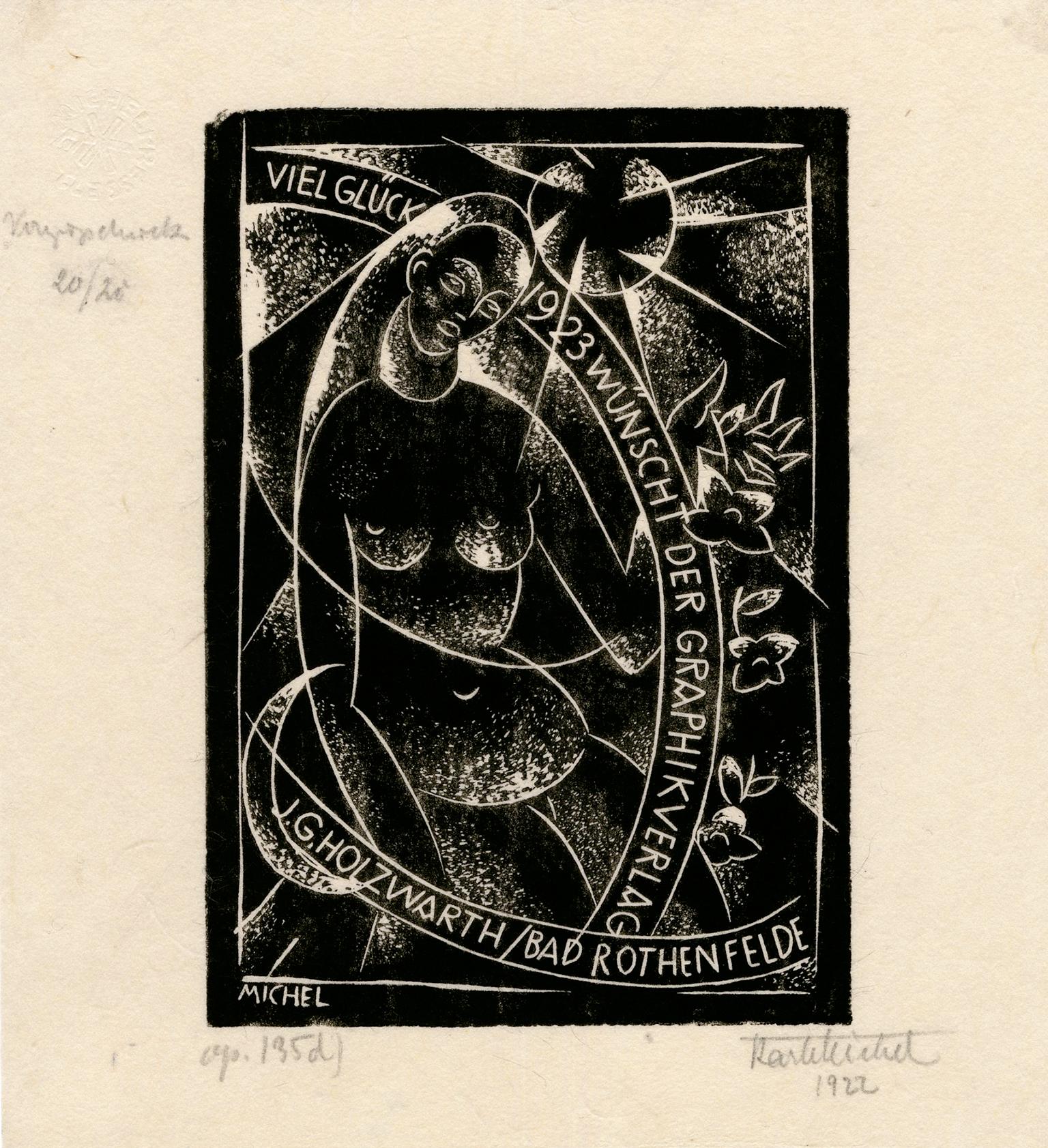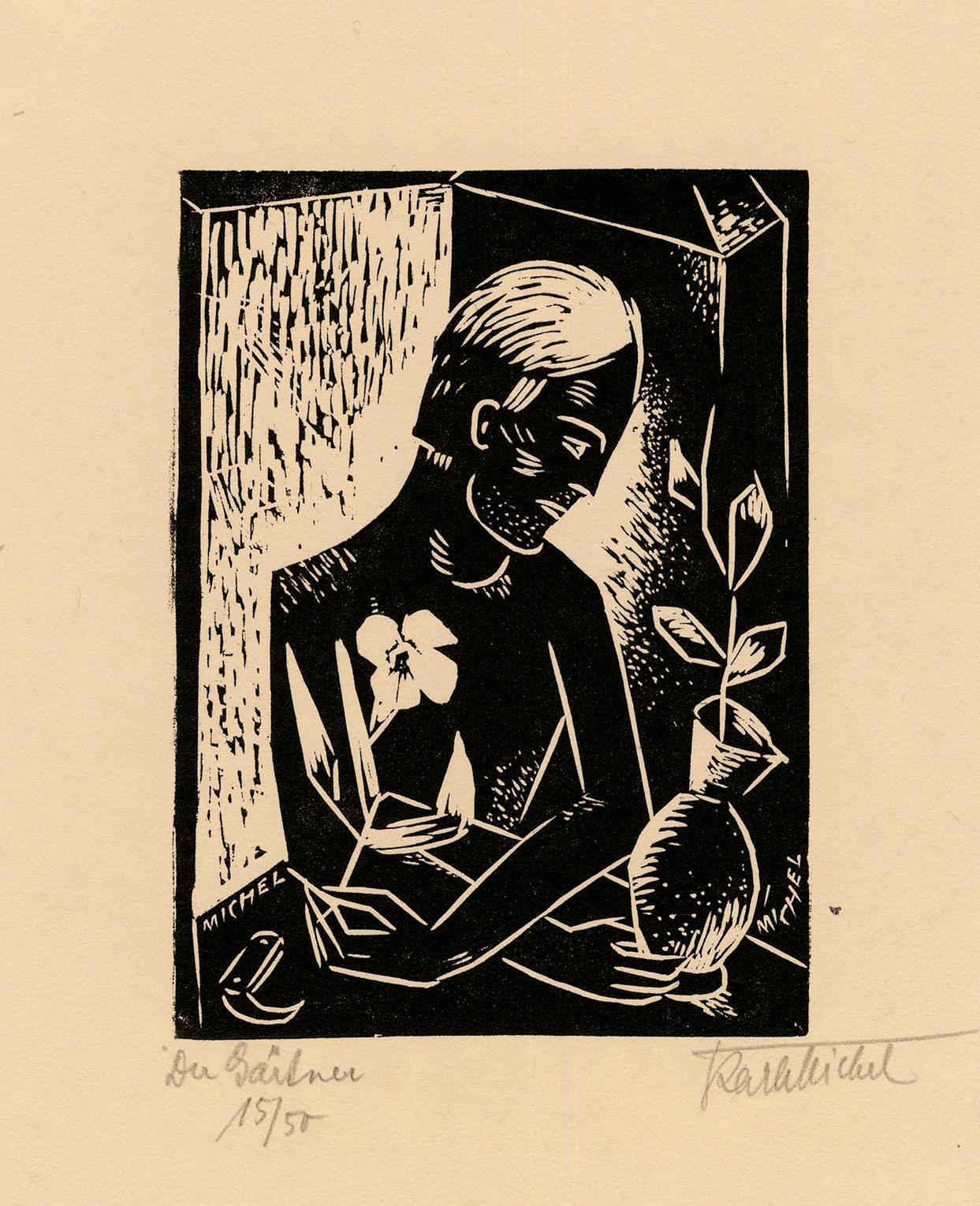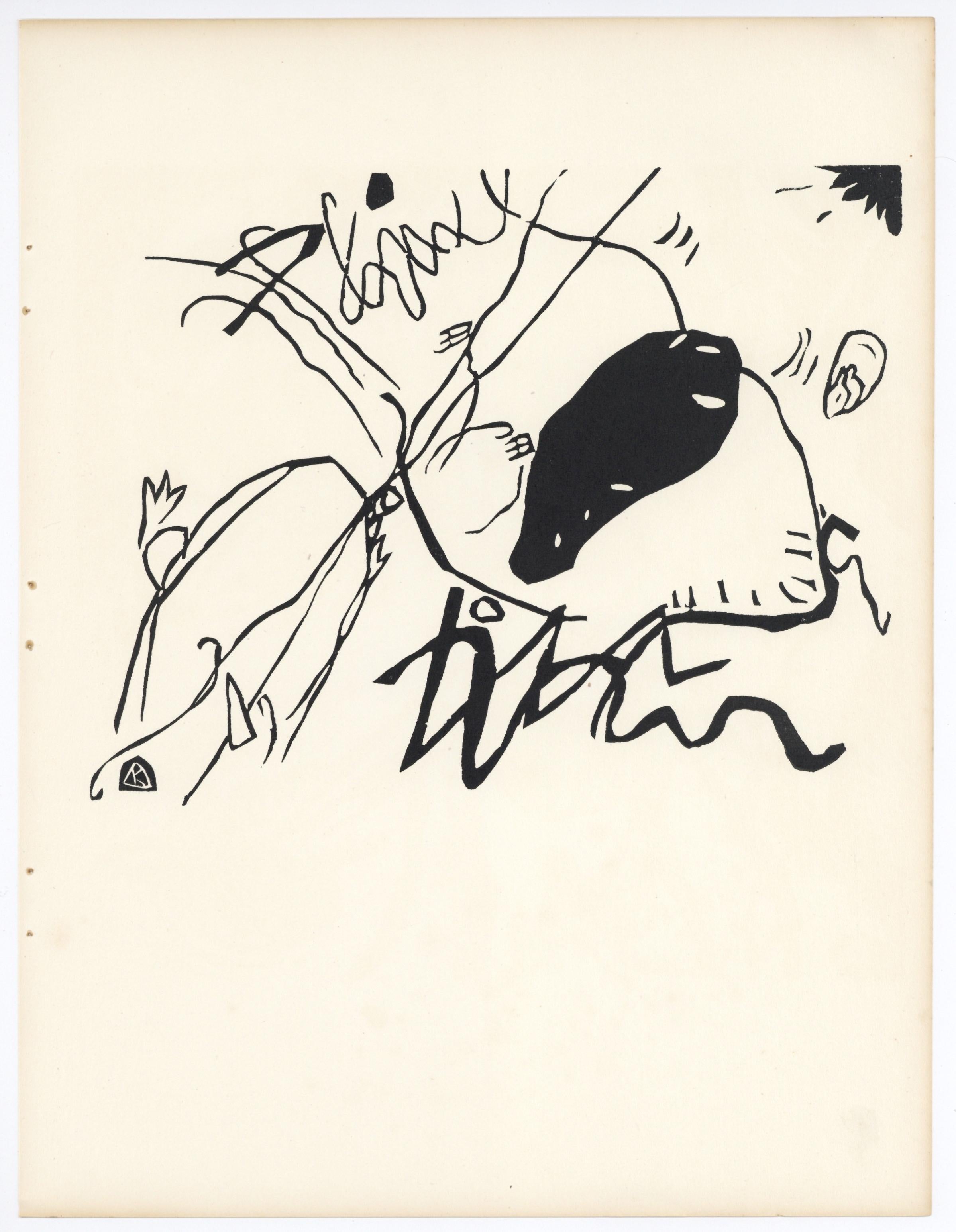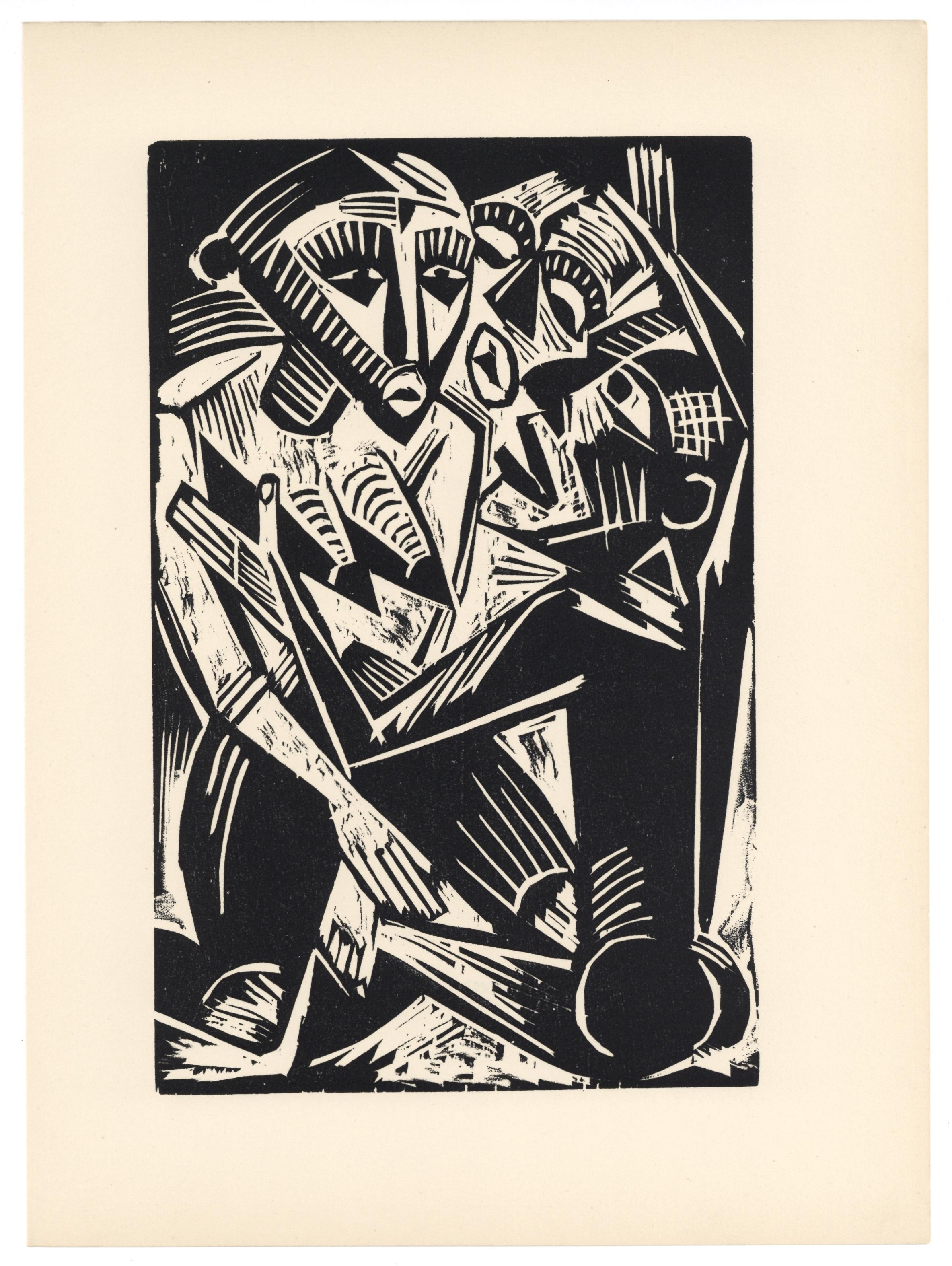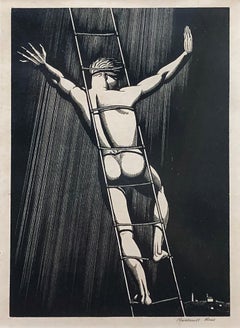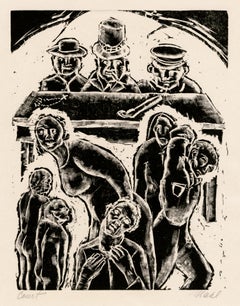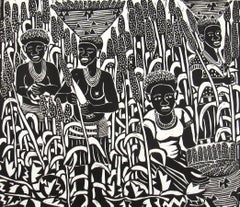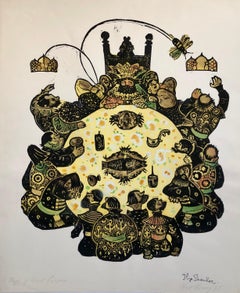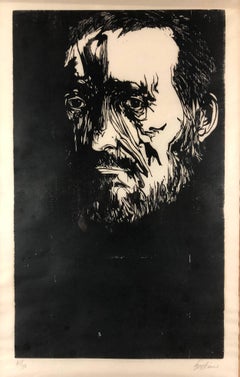
Portrait of Thomas Eakins
View Similar Items
Want more images or videos?
Request additional images or videos from the seller
1 of 3
Leonard BaskinPortrait of Thomas Eakins
About the Item
- Creator:Leonard Baskin (1922-2000, American)
- Dimensions:Height: 26 in (66.04 cm)Width: 16 in (40.64 cm)
- Medium:
- Movement & Style:
- Period:
- Condition:
- Gallery Location:Missouri, MO
- Reference Number:1stDibs: LU74732249803
About the Seller
5.0
Vetted Seller
These experienced sellers undergo a comprehensive evaluation by our team of in-house experts.
Established in 1970
1stDibs seller since 2017
141 sales on 1stDibs
Typical response time: 21 hours
More From This SellerView All
- Max Beckmann Retrospective (The Saint Louis Art Museum Sept 7-Nov. 4, 1984)By (after) Max BeckmannLocated in Missouri, MOThis is a vintage museum exhibition poster from the Max Beckmann Retrospective at the Saint Louis Art Museum, 1984. Max Beckmann was...Category
1980s Expressionist Figurative Prints
MaterialsOffset
- ManBy Elizabeth CatlettLocated in Missouri, MOElizabeth Catlett “Man” 1975 (The Print Club of Cleveland Publication Number 83, 2005) Woodcut and Color Linocut Printed in 2003 at JK Fine Art Editions Co., Union City, New Jersey Signed and Dated By The Artist Lower Right Titled Lower Left Ed. of 250 Image Size: approx 18 x 12 inches Elizabeth Catlett (1915-2012) is regarded as one of the most important women artists and African American artists of our time. She believed art could affect social change and that she should be an agent for that change: “I have always wanted my art to service black people—to reflect us, to relate to us, to stimulate us, to make us aware of our potential.” As an artist and an activist, Catlett highlighted the dignity and courage of motherhood, poverty, and the working class, returning again and again to the subject she understood best—African American women. The work below, entitled, “Man”, is "carved from a block of wood, chiseled like a relief. Catlett, a sculptor as well as a printmaker, carves figures out of wood, and so is extremely familiar with this material. For ‘Man’ she exploits the grain of the wood, allowing to to describe the texture of the skin and form vertical striations, almost scarring the image. Below this intense, three-dimensional visage parades seven boys, printed repetitively from a single linoleum block in a “rainbow roll” that changes from gold to brown. This row of brightly colored figures with bare feet, flat like a string of paper dolls, raise their arms toward the powerful depiction of the troubled man above.” Biography: Elizabeth Catlett (1915-2012) Known for abstract sculpture in bronze and marble as well as prints and paintings, particularly depicting the female figure, Elizabeth Catlett is unique for distilling African American, Native American, and Mexican art in her work. She is "considered by many to be the greatest American black sculptor". . .(Rubinstein 320) Catlett was born in Washington D.C. and later became a Mexican citizen, residing in Cuernavaca Morelos, Mexico. She spent the last 35 years of her life in Mexico. Her father, a math teacher at Tuskegee Institute in Alabama, died before she was born, but the family, including her working mother, lived in the relatively commodious home of his family in DC. Catlett received a Bachelor of Arts degree from Howard University, where there was much discussion about whether or not black artists should depict their own heritage or embrace European modernism. She earned a Master of Fine Arts degree in 1940 from the University of Iowa, where she had gone to study with Grant Wood, Regionalist* painter. His teaching dictum was "paint what you know best," and this advice set her on the path of dealing with her own background. She credits Wood with excellent teaching and deep concern for his students, but she had a problem during that time of taking classes from him because black students were not allowed housing in the University's dormitories. Following graduation in 1940, she became Chair of the Art Department at Dillard University in New Orleans. There she successfully lobbied for life classes with nude models, and gained museum admission to black students at a local museum that to that point, had banned their entrance. That same year, her painting Mother and Child, depicting African-American figures won her much recognition. From 1944 to 1946, she taught at the George Washington Carver School, an alternative community school in Harlem that provided instruction for working men and women of the city. From her experiences with these people, she did a series of paintings, prints, and sculptures with the theme "I Am a Negro Woman." In 1946, she received a Rosenwald Fellowship*, and she and her artist husband, Charles White, traveled to Mexico where she became interested in the Mexican working classes. In 1947, she settled permanently in Mexico where she, divorced from White, married artist Francisco Mora...Category
Late 19th Century American Modern Figurative Prints
MaterialsLinocut, Woodcut
Price Upon Request - Hail and FarewellBy Rockwell KentLocated in Missouri, MORockwell Kent "Hail and Farewell" 1930 Wood Engraving on Paper Signed in Pencil Lower Right Sheet Size: 14 3/8 x 11 1/4 in. Image Size: 8 x 5 1/2 in. Framed Size: 17.5 x 13.5 in. Growing up in a genteel family in New York City, Rockwell Kent was a member of the rugged realist school of landscape painters as well as a popular illustrator and printmaker. His 1930 illustrations for Moby Dick are among his most lasting achievements. He was the first American artist to have work exhibited in the Soviet Union, a reflection of his Communist Party sympathies, which earned him the Lenin Peace Prize in 1967. This espousal of radical politics caused his career to suffer badly in the '50s because his leftist views caused him disdain among many Americans. However, his work, reflecting both realism and modernism, has earned increasing attention from American art historians. His subject matter is wide-ranging including scenes of Maine's Monhegan Island, the Adirondack Mountains, book illustrations, and commercial art renderings for companies including General Electric, Rolls Royce, and Westinghouse. Although his first love was painting, in addition to illustration, he also did fabric, ceramic, and jewelry designs, and spent time as a dairy farmer, carpenter, home builder, and lobster fisherman...Category
1930s American Modern Figurative Prints
MaterialsWoodcut
Price Upon Request - RembrandtBy Salvador DalíLocated in Missouri, MORembrandt Salvador Dali (Spanish, 1904-1989) Signed Lower Right "E.A." (Artist Edition) Lower Left 12 x 10 inches 23.25 x 19.25 inches with frame Salvador Dali was born in May 11, 1...Category
20th Century Modern Portrait Prints
MaterialsEtching
Price Upon Request - Custer's Last FightBy Fritz ScholderLocated in Missouri, MOFritz Scholder (1937-2005) "Custer's Last Fight" Lithograph Ed. 54/75 Signed and Numbered Site Size: approx 22 x 30 inches Framed Size: approx. 35 x 41.5 inches Born in Breckenridge, Minnesota, Fritz Scholder became a prominent Indian portrait, figure, and genre painter in Arizona. His father was part Indian, and Fritz Scholder chose to focus his art work on this part of his lineage and to express both an appreciation and disdain for Indian customs, traditions, and daily existence. He studied at the University of Kansas, Wisconsin State University, and with Wayne Thiebaud at Sacramento College in California. He earned an Master of Fine Arts Degree from the University of Arizona. A long-time resident of Scottsdale, Arizona, he has filled a number of artist-in-residence positions including Dartmouth College and the Oklahoma Summer Arts Institute. In his work, he frequently showed the harsh, realistic side of Indians' lives and deaths including the affects of alcohol and other dissipations, but some of his depictions are humorous such as Indians on horseback carrying umbrellas. His brush-work is generally swift, and the tone often sombre and surreal. A major influence on his work was the contemporary British artist, Francis Bacon, from whom Scholder adapted ironic distortions into his canvases. In Scottsdale, he lived in an adobe-walled oasis of palm trees and oleander, amid skulls and skeletons. In the garden, several of Mr. Scholder's sculptures feature skull-like heads. In the library, an 18th-century skull engraved with witchcraft symbols shared shelf space with books printed before 1500. And the porch had been converted into a skull room, complete with Mexican Day of the Dead...Category
1970s American Modern Figurative Prints
MaterialsPaper, Lithograph
Price Upon Request - The Blue BicycleBy Will BarnetLocated in Missouri, MOThe Blue Bicycle, 1979 Will Barnet (American, 1911-2012) 26 x 25.5 inches 41 x 40 inches with frame Titled Lower Center Signed and Dated Lower Right Edition 41/300 Lower Left From B...Category
1970s American Modern Figurative Prints
MaterialsLithograph
Price Upon Request
You May Also Like
- 'Court' — 1930s Social Conscience, WPA Woman ArtistLocated in Myrtle Beach, SCClaire Mahl Moore, 'Court' also 'The Authorities', woodcut, 1936, edition 5. Signed 'Mahl' and titled in pencil. A fine, richly-inked impression, on ...Category
1930s Expressionist Figurative Prints
MaterialsWoodcut
- Elia Shiwoohamba ( Namibia, 1981 ) Harvesting Time Lino Cut African School 2006By Elia ShiwoohamaLocated in Meinisberg, CHElia Shiwoohamba (* 1981 , Windhoek, Namibia ) Harvesting Time • African School • Linoleum cut • Sheet ca. 34.5 x 43 cm (Image is smaller) • Bottom left numbered 8/50 and titled • ...Category
Early 2000s Expressionist Landscape Prints
MaterialsPaper, Linocut, Woodcut
- Post Soviet Avant Garde Russian Woodcut Print With Hand Watercolor PaintingBy Ilya ShenkerLocated in Surfside, FLThis depicts a feast style celebration scene in a style of German Expressionism. hand signed and hand painted in watercolor. Ilya Shenker, Russian/American (1922 - ) As a soldier in World War II, he survived where millions perished. Upon returning to his home town of Odessa, felt abandoned and alone. He studied Art and Architecture in Odessa, but, one of a number of Russian Jewish artists allowed to emigrate, he left for America when the opportunity arose. He settled in New York City, a choice that has forever impacted his oeuvre. Many of his pictures depict New York cityscapes and lifestyle; however, they remain typically Russian. His subject matter often comes from memory and includes the life that he left behind, family, and friends. Drawing upon his Jewish heritage for inspiration, Shenker also paints historical events, such as "On the Eve of the Assault" in which he portrayed the last night before the destruction of Jerusalem. He has also illustrated a number of classics of Russian literature including Alexander Pushkin. His use of imagination also applies to the figures in his expressionist paintings—fictional characters such as the Spanish literary character Don Quixote make appearances in his work. He has also placed figures such as Rembrandt and Picasso in modern settings: in "Rembrandt Visiting our Family," Shenker sits his most favored artist at his family table, in a tribute to someone he describes as a "peoples artist." He is one in a long line of great Soviet Russian Judaica Jewish artists beginning with Yehuda Pen, who founded Russia's first art school for Jews in Vitebsk in 1897 continuing with his students, including Marc Chagall and El Lissitzky, Natan Altman, Leon Bakst and Robert Falk...Category
1960s Expressionist Figurative Prints
MaterialsWatercolor, Woodcut
- Post Soviet Avant Garde Russian Woodcut Print With Hand Watercolor PaintingBy Ilya ShenkerLocated in Surfside, FLThis depicts a wedding scene in a style of German Expressionism. hand signed and hand painted in watercolor. Ilya Shenker, Russian/American (1922 - ) As a soldier in World War II, he survived where millions perished. Upon returning to his home town of Odessa, felt abandoned and alone. He studied Art and Architecture in Odessa, but, one of a number of Russian Jewish artists allowed to emigrate, he left for America when the opportunity arose. He settled in New York City, a choice that has forever impacted his oeuvre. Many of his pictures depict New York cityscapes and lifestyle; however, they remain typically Russian. His subject matter often comes from memory and includes the life that he left behind, family, and friends. Drawing upon his Jewish heritage for inspiration, Shenker also paints historical events, such as "On the Eve of the Assault" in which he portrayed the last night before the destruction of Jerusalem. He has also illustrated a number of classics of Russian literature including Alexander Pushkin. His use of imagination also applies to the figures in his expressionist paintings—fictional characters such as the Spanish literary character Don Quixote make appearances in his work. He has also placed figures such as Rembrandt and Picasso in modern settings: in "Rembrandt Visiting our Family," Shenker sits his most favored artist at his family table, in a tribute to someone he describes as a "peoples artist." He is one in a long line of great Soviet Russian Judaica Jewish artists beginning with Yehuda Pen, who founded Russia's first art school for Jews in Vitebsk in 1897 continuing with his students, including Marc Chagall and El Lissitzky, Natan Altman, Leon Bakst and Robert Falk...Category
1960s Expressionist Figurative Prints
MaterialsWatercolor, Woodcut
- Post Soviet Avant Garde Russian Woodcut Print With Hand Watercolor PaintingBy Ilya ShenkerLocated in Surfside, FLThis depicts a wedding scene in a style of German Expressionism. hand signed and hand painted in watercolor. Ilya Shenker, Russian/American (1922 - ) As a soldier in World War II, he survived where millions perished. Upon returning to his home town of Odessa, felt abandoned and alone. He studied Art and Architecture in Odessa, but, one of a number of Russian Jewish artists allowed to emigrate, he left for America when the opportunity arose. He settled in New York City, a choice that has forever impacted his oeuvre. Many of his pictures depict New York cityscapes and lifestyle; however, they remain typically Russian. His subject matter often comes from memory and includes the life that he left behind, family, and friends. Drawing upon his Jewish heritage for inspiration, Shenker also paints historical events, such as "On the Eve of the Assault" in which he portrayed the last night before the destruction of Jerusalem. He has also illustrated a number of classics of Russian literature including Alexander Pushkin. His use of imagination also applies to the figures in his expressionist paintings—fictional characters such as the Spanish literary character Don Quixote make appearances in his work. He has also placed figures such as Rembrandt and Picasso in modern settings: in "Rembrandt Visiting our Family," Shenker sits his most favored artist at his family table, in a tribute to someone he describes as a "peoples artist." He is one in a long line of great Soviet Russian Judaica Jewish artists beginning with Yehuda Pen, who founded Russia's first art school for Jews in Vitebsk in 1897 continuing with his students, including Marc Chagall and El Lissitzky, Natan Altman, Leon Bakst and Robert Falk...Category
1960s Expressionist Figurative Prints
MaterialsWatercolor, Woodcut
- Post Soviet Avant Garde Russian Woodcut Print With Hand Watercolor PaintingBy Ilya ShenkerLocated in Surfside, FLThis depicts a wedding scene in a style of German Expressionism. hand signed and hand painted in watercolor. Ilya Shenker, Russian/American (1922 - ) As a soldier in World War II, he survived where millions perished. Upon returning to his home town of Odessa, felt abandoned and alone. He studied Art and Architecture in Odessa, but, one of a number of Russian Jewish artists allowed to emigrate, he left for America when the opportunity arose. He settled in New York City, a choice that has forever impacted his oeuvre. Many of his pictures depict New York cityscapes and lifestyle; however, they remain typically Russian. His subject matter often comes from memory and includes the life that he left behind, family, and friends. Drawing upon his Jewish heritage for inspiration, Shenker also paints historical events, such as "On the Eve of the Assault" in which he portrayed the last night before the destruction of Jerusalem. He has also illustrated a number of classics of Russian literature including Alexander Pushkin. His use of imagination also applies to the figures in his expressionist paintings—fictional characters such as the Spanish literary character Don Quixote make appearances in his work. He has also placed figures such as Rembrandt and Picasso in modern settings: in "Rembrandt Visiting our Family," Shenker sits his most favored artist at his family table, in a tribute to someone he describes as a "peoples artist." He is one in a long line of great Soviet Russian Judaica Jewish artists beginning with Yehuda Pen, who founded Russia's first art school for Jews in Vitebsk in 1897 continuing with his students, including Marc Chagall and El Lissitzky, Natan Altman, Leon Bakst and Robert Falk...Category
1960s Expressionist Figurative Prints
MaterialsWatercolor, Woodcut
Recently Viewed
View AllMore Ways To Browse
50s Retro Illustration
Stone Man Statue
Portrait German Woodcut
Vintage Bird Illustration Book
Egyptian 2 Headed
S Smith And Son
German Wood Statue
Statue Of An Angel
Baskin Signed Print
Primitive Statue
Japanese Bronze One Of Four
Leonard Baskin Signed Prints
World War 2 Navy
Bronze Sculpture 2 Birds
White Owl Sculpture
Leonard Bronzes
Angels Egypt
Rabbi Etching
